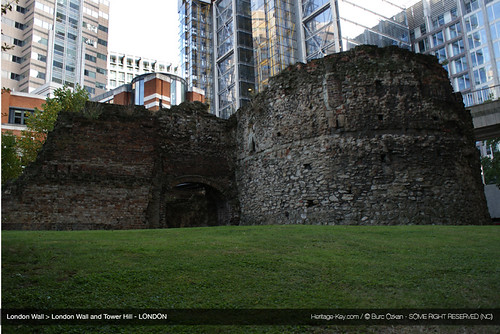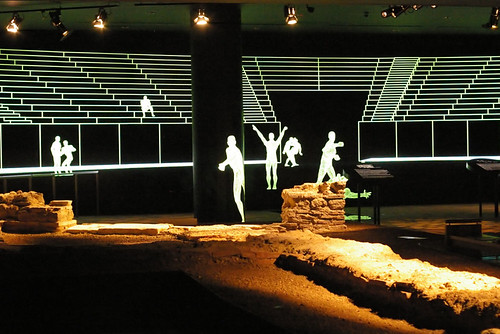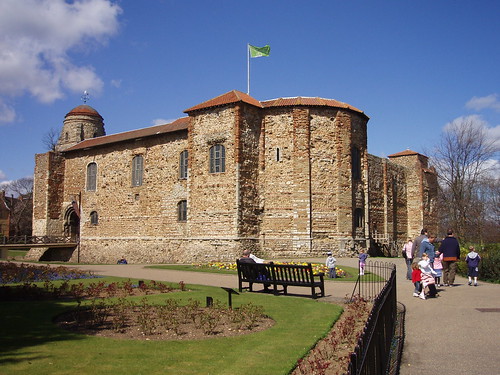 The south east of England has been at the centre of British history for two thousand years. There are hundreds of heritage sites within striking distance of London that can be easily visited in a day. Tracking out from the historic Roman heart of the city, here are some of my suggestions
The south east of England has been at the centre of British history for two thousand years. There are hundreds of heritage sites within striking distance of London that can be easily visited in a day. Tracking out from the historic Roman heart of the city, here are some of my suggestions
Within 2 Miles of the Centre
Why not start where it all began? London wall was built by the Romans in around 200 AD. It lasted over 1,000 years and helped define the shape of the medieval city. One of the few remaining chunks of wall can be seen on Noble Street, a short walk from St Pauls tube station.
Further south, across the road from Cannon Street Station, is the London Stone. This ancient rock is believed to date from Roman times, although the medieval scribe Geoffrey of Monmouth attributed its origins to the mythical Brutus of Troy.  In 1988, archaeologists excavated the remains of Londons Roman amphitheatre. The amphitheatre is now part of the Guildhall Art Gallery, near Bank Station.
In 1988, archaeologists excavated the remains of Londons Roman amphitheatre. The amphitheatre is now part of the Guildhall Art Gallery, near Bank Station.
A short walk from Bank, off Queen Victoria Street, is the Temple of Mithras. Dating from the 3rd century AD, the temple was dedicated to the Persian god of light and the sun. It was discovered on Walbrook Street in 1954 by construction workers, who moved it to its present site.
Heading west, on the Strand, lie the remains of a Roman bath. It can be viewed through a grille or you can make an appointment with the National Trust to see the interior.
Map of Heritage Sites in and Around London
Within 10 Miles of the Centre
For a breath of fresh air, why not take a stroll through the pleasant environs of Greenwich Park, which boasts not only the famous maritime museum but also Roman remains and an Anglo Saxon burial site.
The leafy suburb of Kingston-upon-Thames is home to the Coronation Stone. Legend has it this ancient stone was used in the coronation of seven different Anglo Saxon kings in the tenth century. It now stands on a plinth outside Kingston guildhall on the high street. Frequent trains run from London Waterloo to Kingston. While in Kingston, its always worth paying a visit to nearby Hampton Court Palace, home of Henry VIII.
Horsenden Hill in the borough of Ealing has a history dating back to the Iron Age. Recent excavations indicate there was hilltop fort on the site. Today the park boasts impressive views of the surrounding area. Sudbury Town tube on the Picadilly Line is the closest stop.
Slightly further north in the borough of Harrow is a lozenge-shaped stone known as the Weald Stone. This sarsen boundary stone lends its name to the local area and station, as well as the Wealdstone Inn opposite. The stone was well known in Tudor times but its exact origins are unknown. A trip to this area can also encompass Harrow Park and the leafy streets of Harrow-on-the-Hill.
Within 50 Miles of the Centre
 South of London, near Coulsdon, lie the Farthing Downs. This beautiful chalk grassland includes Anglo Saxon tumuli, an Iron Age field system, abundant wildlife and fine views of the city. The nearest station is Coulsdon South.
South of London, near Coulsdon, lie the Farthing Downs. This beautiful chalk grassland includes Anglo Saxon tumuli, an Iron Age field system, abundant wildlife and fine views of the city. The nearest station is Coulsdon South.
The picturesque village of Banstead, near the North Downs, boasts a 12th-century church, a medieval well and Saxon barrows. Regular trains depart from London Victoria.
North of London, the village of Wheathampstead in Hertfordshire is home to Devils Dyke, an ancient ditch built by the Catuvellauni tribe. The town is a short drive from Welwyn Garden City.
The market town of St Albans boasts a number of key heritage sites. Verulamium Museum stands on the site of one of Roman Britains major towns and boasts a wealth of information and displays, as well as open-air excavations. The site includes the mosaic floor of a large house and a Roman theatre dating from 160 AD. Trains run from London St Pancras.
Chelmsford in Essex has a history dating back thousands of years. Chelmsford Museum hosts a special exhibition encompassing the towns history from the Iron Age through to Norman times. Chelmsford is on the train line from Liverpool Street.
Returning full circle to another seat of Roman power, 50 miles from London lies Colchester in Essex, the first Roman capital of Britain. Sites of interest include a Roman wall, built in 60 AD following Boudiccas rebellion, a Norman castle and a Roman circus.
Watch our AWiL explorers visiting several of these sites, and venturing out as far as Stonehenge and Hadrian’s Wall in the Ancient World in London video series. Have we missed out your favourite? Suggest an historical day trip destination as a comment below and win 10 Heritage Key points.
